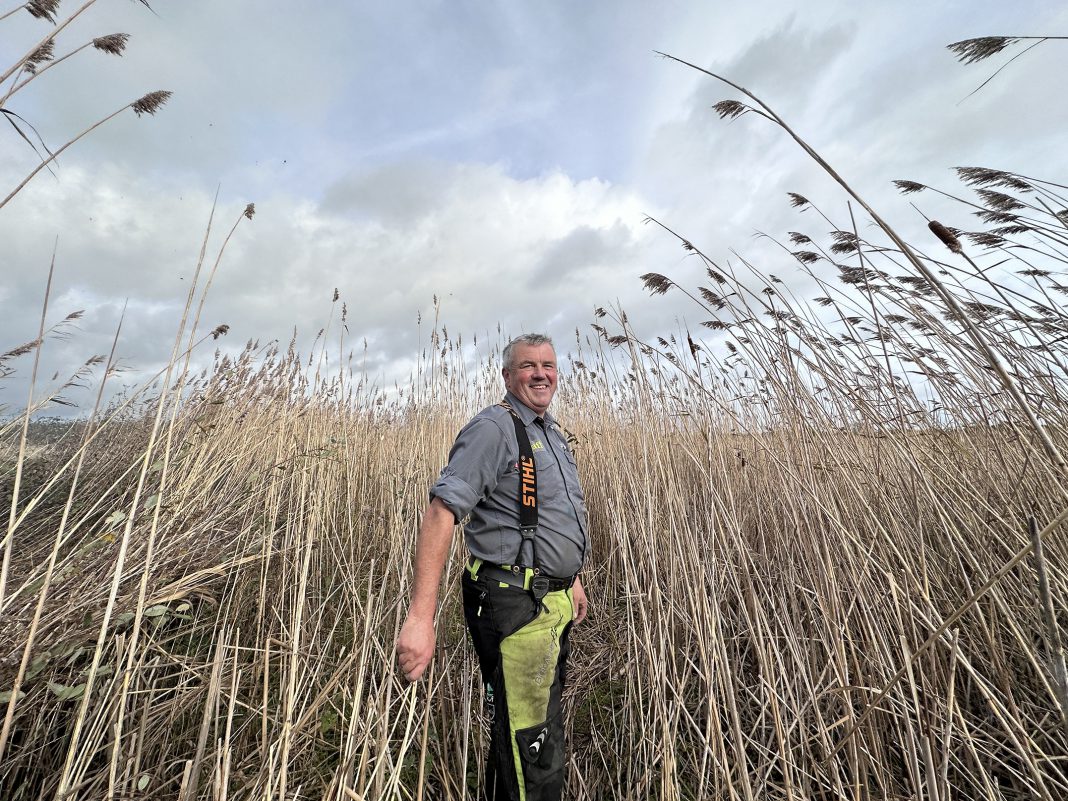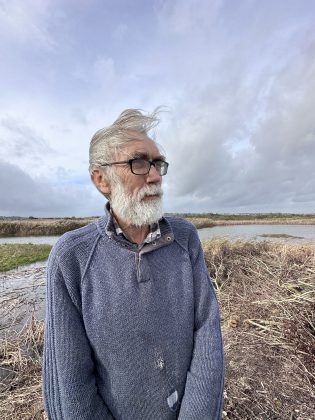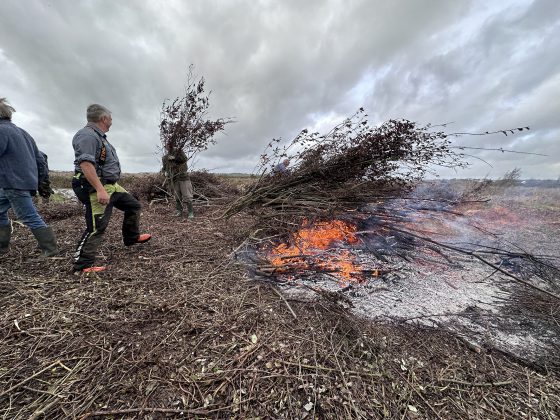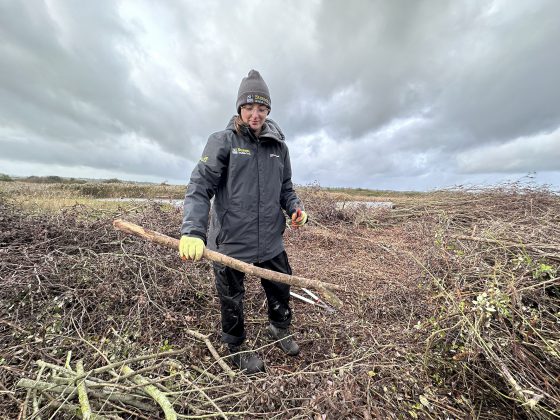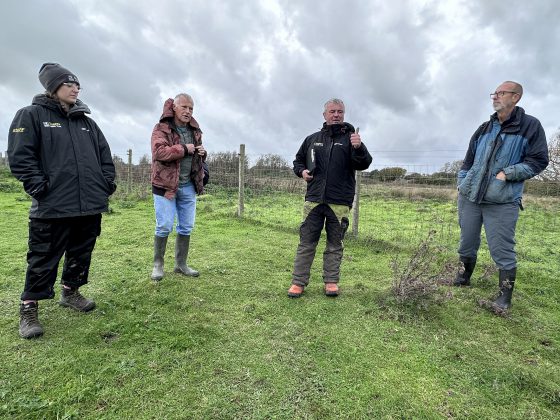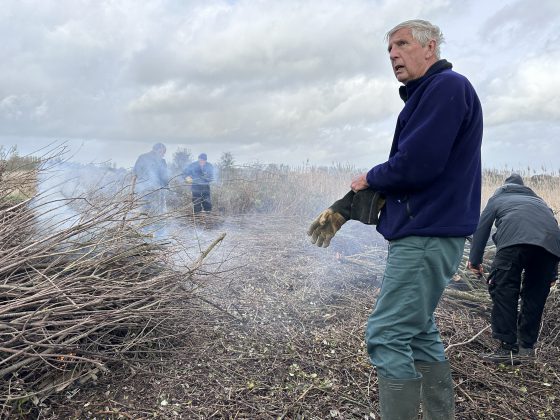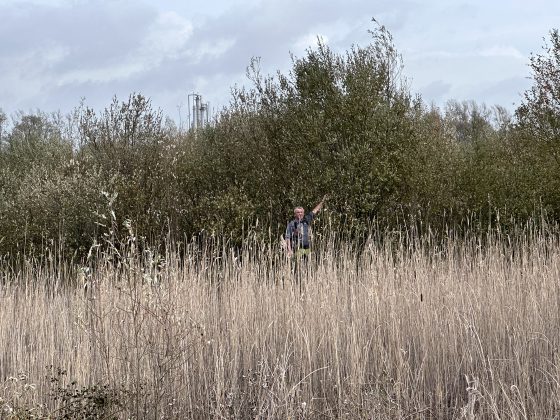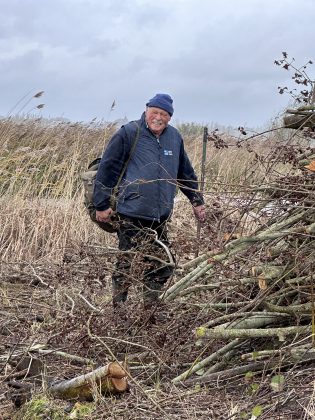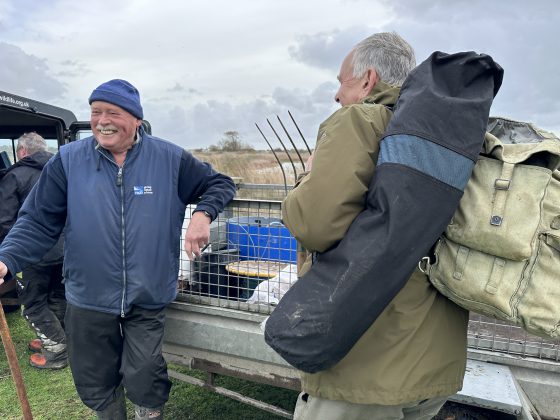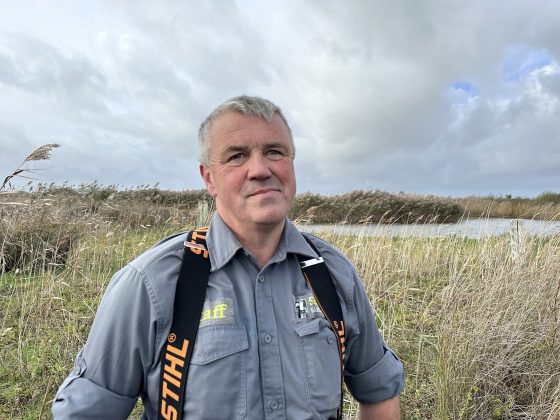When Cliff Dean, chairman of the Friends of Rye Harbour Nature Reserve, asked me if I would like to write an article on the volunteers’ work on the reed beds I replied “Yes” but was not quite sure what I had let myself in for. I donned my waterproof coat and yellow wellies and set off to meet David King, a Sussex Wildlife Trust warden, and was taken to meet a band of volunteers who were going to spend the day maintaining the reed beds.
David told me about the work that the group was undertaking as we drove to the reed bed: “Reed beds are of outstanding importance to wildlife. This includes birds like bittern, marsh harrier, water rail, reed warbler, reed bunting and bearded tit, all of which now breed here. There are also water voles and harvest mice as well as many insects like the group of wainscot moths. The interface between open water and reed bed is also very attractive to a wide range of additional creatures.
“The reason we need to maintain these areas is because as the reed bed dries out willows start to move in, and these increase the drying process and fairly quickly the reed bed turns to a wet woodland and the reedbed is lost with all of its specialist species.
“We rely on a band of volunteers to help us to keep the willow down. It is hard work and labour-intensive, but our volunteers come with a willing spirit and every two weeks we meet and spend the day together.”
Peter is one of the regular volunteers and explained: “Mending fences, building bridges, making hay while the sun shines, walking on water, and setting the place on fire are some of the things we do, literally, to make the Rye Harbour Nature Reserve as special as it is.
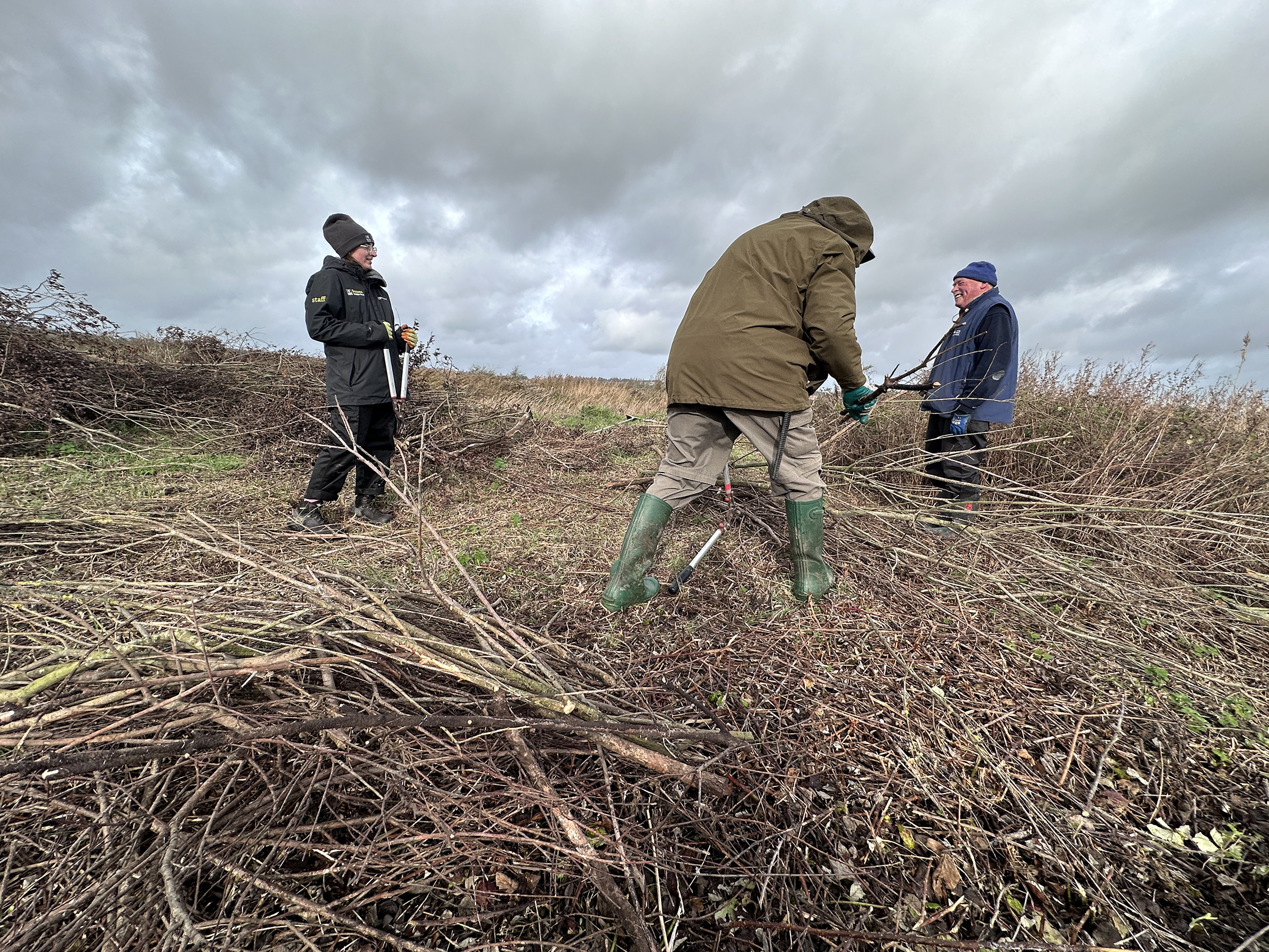
“Every fortnight a motley collection of people, mostly men, and mostly approaching, or passing, or well-past retirement age can be seen trudging across the fields on various parts of the reserve, many of which are not open to the general public, to do battle in the reed-beds. No, it’s not a re-enactment of Hereward the Wake’s heroic struggles against William the Conqueror, but a decade-long project to control the willows that would readily conquer the reed beds at Castle Water near Camber Castle. The willow grows and spreads very quickly and needs to be cut down and removed, to allow the reed beds to establish and spread, providing a very special habitat for wildlife.
“The dozen or so volunteers who make up the work parties come from all walks of life and have a whole range of motivations. Some want to help the environment, to get exercise, to ‘give something back’, to meet new people, socialise, bird-watch, learn about the flora and fauna on the reserve, or just to get out into the fresh air for a day. Whatever the reason, most will go home at the end of a hard day, physically exhausted, mentally exercised, socially enlightened, and probably muddy and wet.
“They will have had a chance to learn new stuff, from each other, from nature, and from the very knowledgeable leader, warden David King. What they may not learn is how much work and organisation goes into setting up each work-party. Quite apart from the communication and planning how to get everyone to the work site, bringing the right equipment, preparing the risk assessment, notifying the fire brigade (when bonfires are involved), and ensuring acceptable weather (usually), it takes several days work to cut enough willow and plan and prepare sites to keep the work-party busy for a whole day.
“Most importantly, David manages to make everyone feel welcome and important, and valued, which is as much as any volunteer really wants. The reserve is very lucky to have such a willing, capable and good-humoured bunch of volunteers, and the volunteers are lucky to have the chance to do something really worthwhile, and to be really appreciated.”
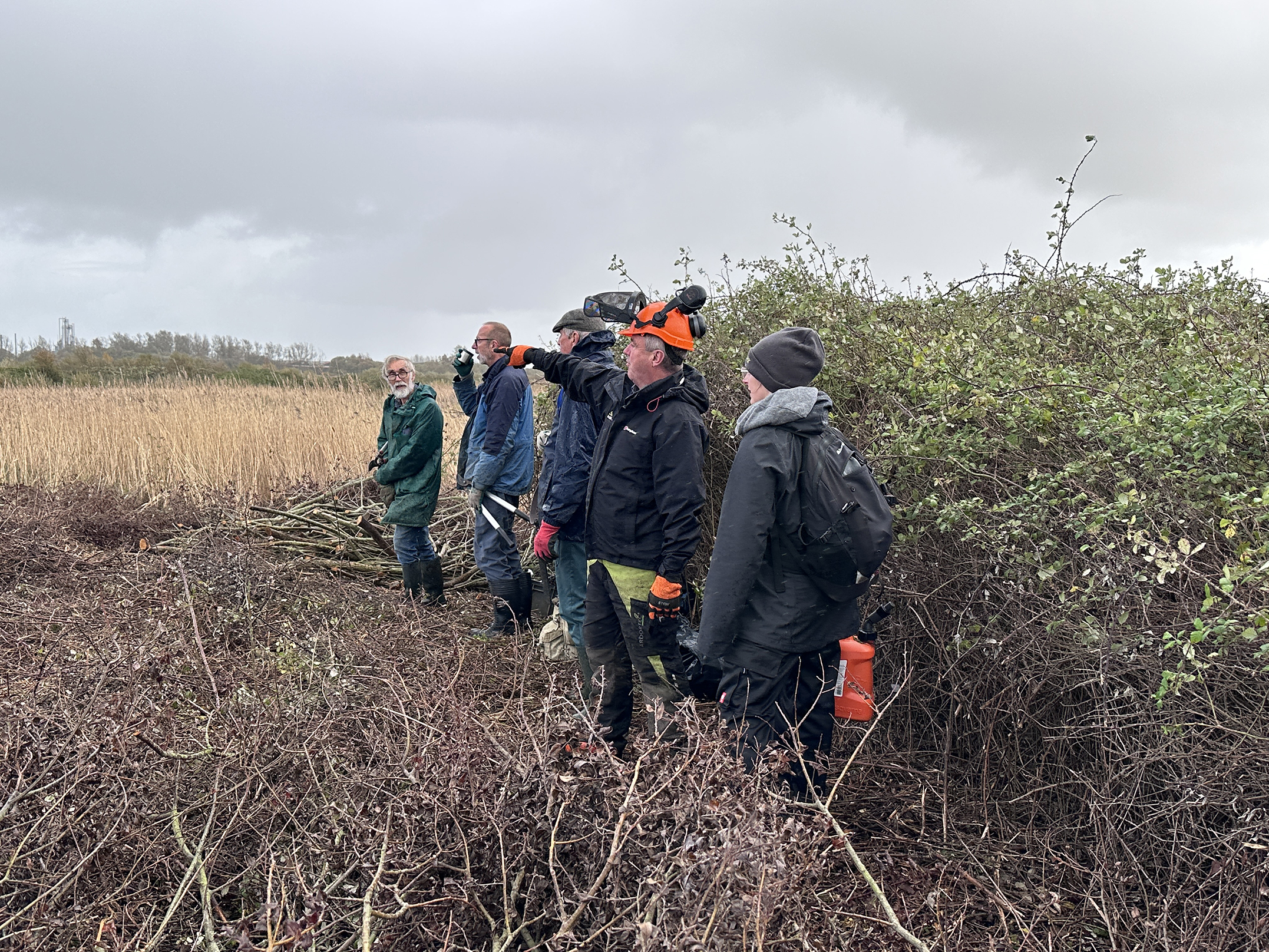
I also met with Shannon who is our heritage trainee funded by the National Lottery Heritage Fund as part of our Discover Rye Harbour project: “On Tuesday, November 8, I joined in with my first-ever volunteer work party. Having been with the Sussex Wildlife Trust for nearly three months it was great finally to see the essential work that our volunteers do directly.
“I have always been an active person and thoroughly enjoy practical tasks, and seeing the willows burn was mesmerising and satisfying at the same time. What’s more, I greatly admire all the volunteers whom I worked with. Having come from various backgrounds there was no shortage of interesting conversation and positive attitudes. It was really nice to see the camaraderie and the friendships that have developed from regular work parties. All the volunteers respect Dave greatly, and he is a wonderful leader. His fairness and positivity really puts no strain on the work, which can be gruelling at times.
“Getting to know the volunteers has increased my appreciation for the work they do here. There was debate and discussion but also jokes and laughter; it was a really positive experience. Being active and socialising are the main appeals of volunteering for these types of work parties. One down-side would perhaps be the weather.
“Going into the winter months it can be unpredictable. On Tuesday we were very lucky, sunshine and a few showers for most of the day but the downpour started just as we were finishing. The work parties go ahead in most weathers and I am looking forward to joining future endeavours with plans for me to lead work parties myself.”
Image Credits: Kt bruce .



